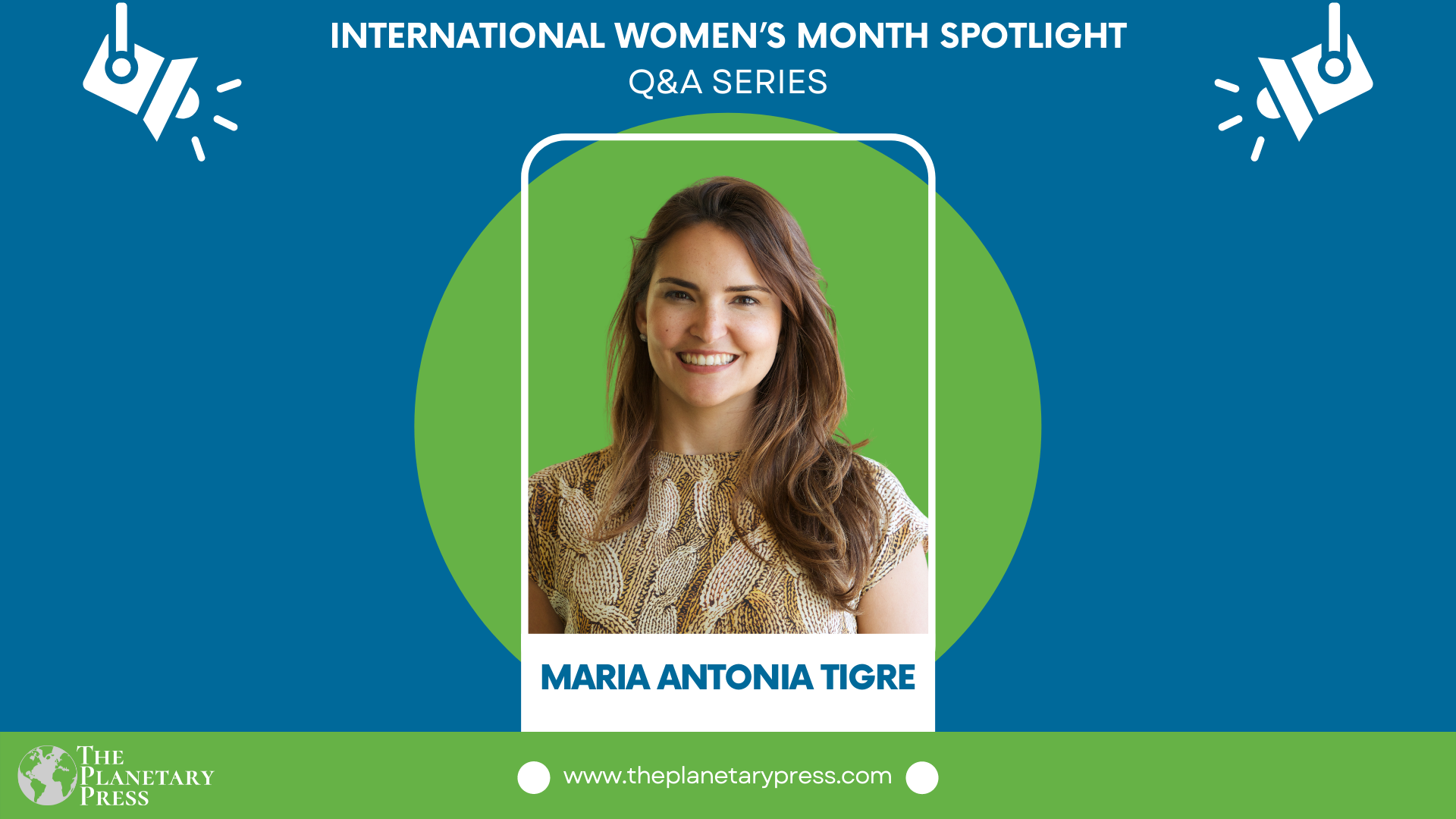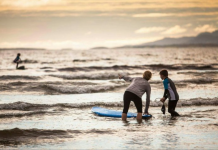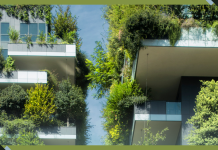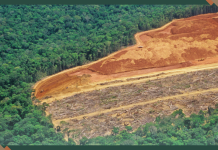International Women’s Month Q&A series
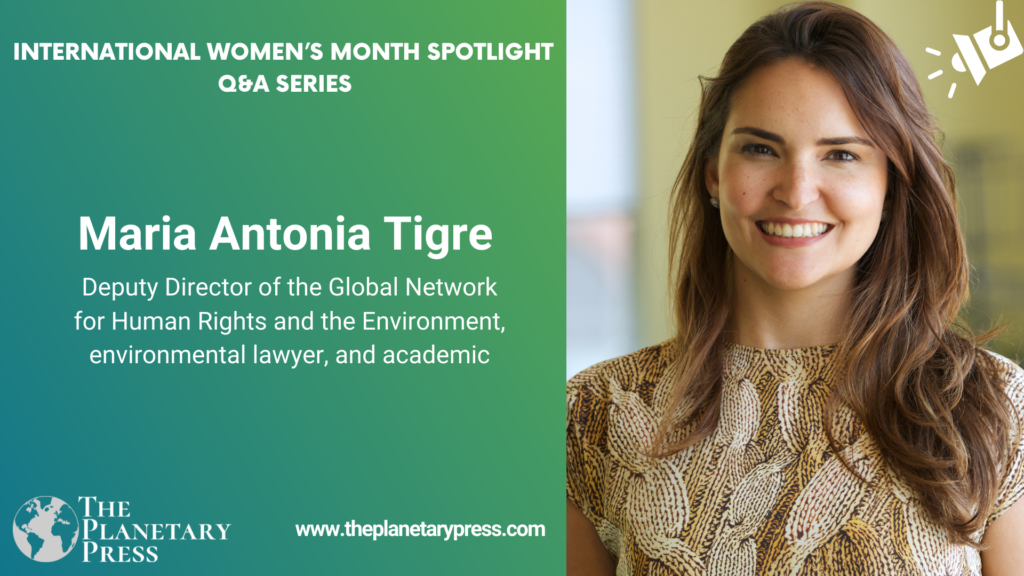
Please tell us a little about yourself and your work with the Global Network for Human Rights and the Environment.
I am, first and foremost, an environmental lawyer and an academic. However, my career as an environmental lawyer developed in a non-linear way and took many twists and turns. My work in human rights and the environment started almost by accident. While I was writing my first book, Regional Cooperation in Amazonia: A Comparative Environmental Law Analysis, I had the pleasure of participating in the Widener Scholar-In-Residence Program, which focused on Global Environmental Constitutionalism. That experience led me to look at some of the challenges faced in the Amazon region (see A Plea for Regional Cooperation in Amazonia) through a lens of human rights and the environment and eventually to the book chapter Implementing Constitutional Environmental Rights in the Amazon Rainforest, edited by Erin Daly and James May. My work on environmental issues in Amazonia also relates to the protection of Indigenous Peoples as guardians of the forests.
Shortly after, I became a fellow at the Cyrus R. Vance Center for International Justice, where I had the privilege to support the work of the former Special Rapporteur on Human Rights and the Environment, John Knox. At the Vance Center, we assisted several NGOs, both large and small, with the legal capacity they often lacked. Much of the work we did related to human rights and the environment and introduced me to several of the issues faced on the ground by communities while protecting the environment. I was then convinced about the relevance of the relationship between environmental protection and human rights and decided to refocus a lot of my academic work in that direction.
My second book, Gaps in International Environmental Law: Toward a Global Pact for the Environment, while focused on the Global Pact for the Environment and the process of adopting a new international environmental law agreement at the United Nations, is primarily focused on the right to a healthy environment. The book is part of my S.JD. thesis, which I recently submitted. The thesis focuses on the development of the right to a healthy environment at the international level through multiple exciting and unique perspectives. One of my favorite chapters focuses on the philosophical and religious underpinnings of the right to a healthy environment and shows a broad consensus on the moral and philosophical reasoning of environmental protection. The focus of my thesis changed as the initiative of the Global Pact for the Environment also shifted, but it remained at its core focused on human rights and the environment.
As a result of my work with Erin Daly and my research, I became deeply involved with the Global Network of Human Rights and the Environment (GNHRE). Erin was then the director of GNHRE and, shortly after I joined the network, invited me to be part of the core team by representing Latin America. The GNHRE is a wonderful group of volunteer scholars and practitioners engaged in this exciting area, and I had the privilege to work on several projects throughout the years. For example, we recently concluded a project focused on the Escazú Agreement, which recently entered into force. We also are conducting an exciting project on climate litigation in the Global South in a partnership with the Sabin Center for Climate Change Law, where I currently work. As my engagement with GNHRE increased, I was invited to become deputy director of the organization, working alongside Dina Lupin.
Can you share with us more about your background and how you got started working in human rights-based climate litigation?
I started my career in Brazil and could never have imagined that law school would lead me here. I went to law school intending to work at the United Nations and on international law. During law school, I became instantly fascinated by environmental law. I had the opportunity to study in Lisbon and London during that time, which certainly broadened the scope of my understanding of the law and the opportunities I had with my law degree. After I graduated, I worked for a few law firms on more traditional environmental law projects, mainly from an industry perspective. That experience was essential to my learning process, but I knew it wasn’t what I wanted to do with my life. As I came to New York to pursue an LLM, I began to rethink my career path. That eventually led me to academia and a desire to contribute in different ways to make a small change in how we respond to the environmental harms our planet currently faces. I talked a bit of my career path and the challenges I encountered here.
I started working on human rights-based climate litigation as part of a deep dive into the implementation of the right to a healthy environment and other “traditional” human rights that are impacted by environmental harm and climate change. I instantly became fascinated by it as courts started to use the right to a healthy environment and other traditional human rights to provide a much-needed nudge to states – and now companies and other stakeholders – to act to mitigate and adapt to climate change.
I am currently the Global Climate Litigation fellow at the Sabin Center for Climate Change Law at Columbia Law School. My primary job is to maintain the Global Climate Change Litigation database, which the Sabin Center has held since 2011. The database represents one of the most comprehensive global studies on climate change litigation and is relied upon by scholars worldwide. I feel incredibly fortunate to help make this resource more comprehensive and engage in research on climate litigation worldwide. It is a growing field, and I have a front-row seat to the daily changes that are happening.
How can people support or get involved with your organization?
Climate litigation is increasingly becoming a powerful tool to hold States and corporations accountable for their shortcomings in mitigation and adaptation efforts. Individuals, communities, nongovernmental organizations (NGOs), business entities, and subnational governments have turned to the courts to seek relief through the enforcement of existing climate laws; integration of climate action into existing environmental, energy, and natural resources laws; clear definitions of fundamental climate rights and obligations; and compensation for climate harms. As these actions become more frequent in their occurrence and more numerous overall, the body of legal precedent grows, forming an increasingly coherent field of law.
In our ongoing effort to enhance the database and advance the dialogue on climate litigation, the Sabin Center has launched a Global Network of Peer Review Scholars on Climate Litigation. The Network includes scholars and practitioners in countries around the world who act as “national rapporteurs” within their country of origin. By representing a country, rapporteurs contribute to updating the Sabin Center’s database regularly on new cases arising in their jurisdiction, as well as any developments in ongoing cases. The collaboration between the rapporteurs and the Sabin Center is crucial to ensuring the database is comprehensive and regularly updated.
National rapporteurs are recognized on the Sabin Center’s website and become part of a network engaged in tracking, analyzing, and conducting climate change litigation. The Network connects the rapporteurs and invites them to engage in an ongoing conversation about new developments, emerging trends, analytical approaches, and applied research. The discussions between the rapporteurs – either in virtual meetings, written collaborations, public-facing webinars, workshops, or conferences – will likely have a lasting impact on the maturation of climate change litigation worldwide. These conversations are often led through a comparative approach. In addition, this approach facilitates an understanding of legal arguments in climate change litigation and their potential replicability across jurisdictions.
If you are interested in our work, you are welcome to apply to become a rapporteur and represent a jurisdiction that we don’t yet cover. We welcome applications through this form.
What message do you have for today’s youth who want to take action on climate change?
Today’s youth has been incredibly inspirational and taking matters into their own hands to use their voice and their right to be heard to push governments towards increased action on climate change. They feel deeply that their future is threatened, and instead of waiting for the adults to take charge, they are voicing their concerns and demanding action. It is a genuinely inspirational movement, and I am particularly interested in the emerging youth-based climate litigation claims that are being brought. I hope they keep pushing for more action and that my kids learn from their actions and can also continue what they started.
What advice would you have for your 13-year-old self?
Be patient and don’t believe that anything is already set in stone. You can always change your path no matter how grim it appears. Tomorrow is a new day and a fresh opportunity to start again.
What music motivates you? Who is your favorite?
I am a big fan of Broadway showtunes and constantly listen to them when I need a pick me up. It makes me happy. But I got through the final revisions of my thesis with a lot of Taylor Swift.
Website(s):
Sabin Center profile: https://climate.law.columbia.edu/directory/maria-antonia-tigre
GNHRE profile: https://gnhre.org/profiles/s-z/tigre-maria-antonia/
Social Media:
Twitter: @toniatigre
Linkedin: https://www.linkedin.com/in/mtigre
Google scholar profile: https://scholar.google.com/citations?hl=en&user=7u3tajMAAAAJ&view_op=list_works&alert_preview_top_rm=2&sortby=pubdate#d=gsc_md_iad&u=%3Fhl%3Den%26imq%3DMaria%2BAntonia%2BTigre%26btnA%3D1%26view_op%3Dimport_lookup%26alert_preview_top_rm%3D2%26json%3D%26imstart%3D10
Amazon profile (for my books): https://www.amazon.com/Maria-Antonia-Tigre/e/B0937HP5Q9%3Fref=dbs_a_mng_rwt_scns_share

